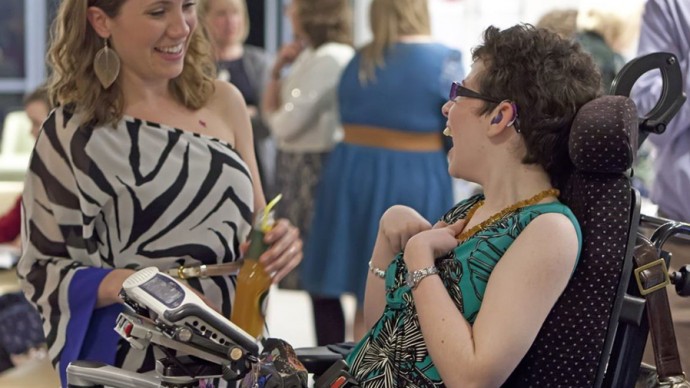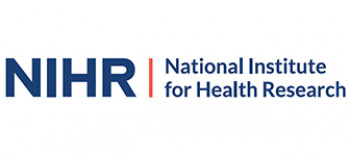
Research: Identifying appropriate symbol communication
Providing evidence to influence the consistency and quality of clinical decision-making in the supply of symbol communication aids.
Project summary
Project summary
-
2016 to 2019
Typically developing children start producing words between the ages of 12 and 18 months, and develop fully expressive speech around four years old.
Children with conditions such as cerebral palsy often struggle to develop intelligible speech.
These children create messages through the use of communication aids that speak pre-stored words, providing independent communication. The appropriate recommendation of these aids has a positive impact on wellbeing and educational attainment.
Augmentative and alternative communication (AAC) clinical decision-making is a complex and lengthy process that has to be individualised for each child and young person.
The identifying appropriate symbol communication (I-ASC) project sought to improve the outcomes for children who need symbol communication aids to communicate. Specifically by providing UK-based research evidence to influence current practice and enhance the AAC decision-making process.
The process requires the involvement of expert clinicians, the child, family, and local health and education professionals. Our research involved all of these perspectives.
Project findings
We found:
- abandonment of aided technology may relate to decisions made in the absence of accurate measures of the child’s existing language and communication abilities, as well as limited involvement of the child and family
- there is confusion about the terms we should use to describe communication aids, which is unhelpful for professionals and families
- many interventions seem to focus on offering communication opportunities rather than understanding what language and communication skills the child may have, or could develop
- there is a focus on the ability to access a communication aid - for example finger pointing or eye gaze technologies - rather than understanding how to support language skill development
Our mixed-methods study developed new resources to support professionals in health, education and social care, as well as families and other key partners in the decision making process for those who need AAC.

Giving a voice to alternative communicators
Professor Janice Murray’s explains how her innovative research is changing the ways AAC tools are recommended and their users supported.Research outputs
Academic papers
-
Jayes, M, Moulam, L, Meredith, S, Whittle, H, Lynch, Y, Goldbart, J, Judge, S, Webb, E, Meads, D, Hemsley, B and Murray J (2021) Making public involvement in research more inclusive of people with complex speech and motor disorders: the I-ASC project. Qualitative Health Research 2021
-
Murray, J, Lynch, Y, Goldbart, J, Moulam, L, Judge, S and Webb, E et al (2020) The decision-making process in recommending electronic communication aids for children and young people who are non-speaking: the I-ASC mixed-methods study. Health Service Delivery Research 2020;8(45)
-
Webb, EJD, Lynch, Y, Meads, D, Judge, S, Randall, N, Goldbart, J, Meredith, S, Moulam, L, Hess, S and Murray, J (2019) Finding the best fit: A discrete choice experiment on the decision making of augmentative and alternative communication professionals. BMJ Open, 9:e030274
-
Judge, S, Randall, N, Goldbart, J, Lynch, Y, Moulam, L, Meredith, S and Murray, J (2019) The language and communication attributes of graphic symbol communication aids – A systematic review and narrative synthesis. Disability and Rehabilitation: Assistive Technology
-
Lynch, Y, Murray, J, Moulam, L, Meredith, S, Goldbart, J, Smith, M, Batorowicz, B, Randall, N and Judge, S (2019) Decision making in communication aid recommendations in the UK: Cultural and contextual influencers Augmentative and Alternative Communication. 35(3): 180-192
-
Murray, J, Lynch, Y, Meredith, S, Moulam, L, Goldbart, J, Smith, M, Randall, N and Judge, S (2019) Professionals’ decision making in recommending communication aids in the UK: Competing considerations Augmentative and Alternative Communication. 35(3): 167-179
-
Webb, E, Meads, D, Lynch, Y, Randall, N, Judge, S and Goldbart, J et al (2019) What’s important in AAC decision making for children? Evidence from a best-worst scaling survey. Augmentative and Alternative Communication
Additional Training materials
-
AAC assessment module 1 - an introduction to AAC assessment
-
AAC assessment module 2 - an introduction to some people who might use AAC, assessment techniques and more
Research team
Research team
Lead researcher
Co-researchers
-
Helen Whittle
-
Stuart Meredith, AAC user
-
Liz Moulam, a parent of an AAC user
Collaborating with:
-
Simon Judge and Nicola Randall, Barnsley Assistive Technology Service
-
Prof Stephane Hess, Dr David Meads and Dr Edward Webb, University of Leeds
Funding
With funding from:

National Institute of Health Research
Contact
Contact us
For general enquiries about this project and the communication disability research cluster, you can contact research lead Prof Janice Murray.
